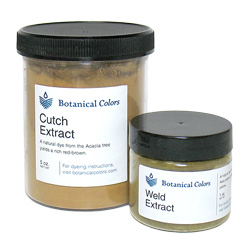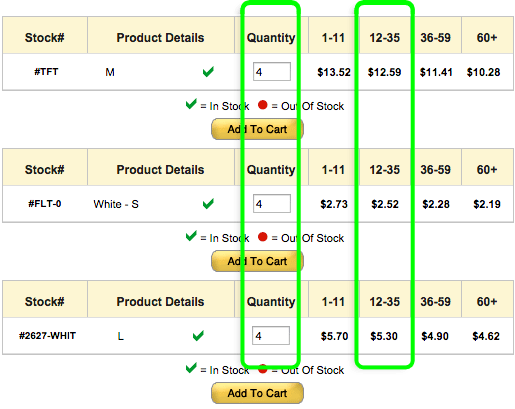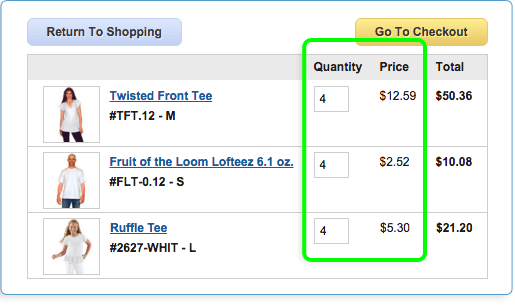For 1 lb. sizes, please call us for availability and lead times. (800) 542-5227
Chlorophyllin Green
The color yield from chlorophyllin is a soft, clear green with a hint of blue. Like many natural dyes, it appears to dye protein (animal) fibers well and create lighter shades on cellulose (plant) fibers. The dye is less lightfast than our traditional workhorse dyes but it adds a nice pop of green to your palette. For longest lasting color, consider using protein fibers and protecting your work from constant light exposure. And remember, a little goes a long way.
Cutch
Cutch (Acacia catechu) is the rich reddish brown color seen in Indian textiles. It is sweet smelling in the dye bath and yields rich red browns with long cooking times. Cutch and an alum mordant will be golden yellow-brown and requires a two hour simmer to develop its deepest shades; the addition of 10% hydrogen peroxide or 2% dissolved soda ash in the dyebath will dramatically deepen the color. Cutch combined with iron will yield a lovely chocolate brown. 4 oz. of Cutch extract will dye approximately 1.1 pound of fiber to a dark shade.
Fustic
Fustic (Chlorophora tinctoria) is high in tannic acid, which makes it an ideal cotton dye; in fact, it was used in the military to dye the color khaki during World War I. On cotton, it will dye a clear gold and on silk and wool it will dye a warm gold. Fustic also provides a good base for other colors: overdyed with indigo for green; combined with madder and cochineal to make oranges; and mixed with logwood or with iron to produce olive greens. Use at 1-10% for bright to rich gold. 1.5 oz. of Fustic extract will dye approximately 1.5 pounds of fiber a medium gold shade. Fustic is thick and tends to get sticky when cold; it flows best when it's at 80 degrees or slightly warmer. If it gets cold and thickens, place the bottle in a warm area and it will pour easily. We do not recommend microwaving it, but another option is to put the bottle in a warm water bath.
Himalayan Rhubarb
Himalayan Rhubarb is a traditional dye from the Himalayan mountains between India and Bhutan. The plant yields a deep golden yellow color with an alum mordant. Shifts in pH will create more yellow or nearly brick red colors. The dye is aromatic and earthy smelling and makes a wonderful bright olive green when combined with Saxon Blue in the dye pot. Use it at 1-10% on the weight of the fiber and shift its pH with cream of tartar or soda ash. 4 oz. of Himalayan Rhubarb will dye approximately 2.2 lbs of fiber.
Lac
Lac (Laccifer lacca) extract comes from a scale insect and the deep red colorant is extracted from a hard resinous crude shellac before it can be successfully used as a dye. The resin is known as shellac, and is used for lacquer and as a protective covering for wood. Lac is an affordable alternative to obtain pinks, purples, and burgundy reds on protein fibers using an alum mordant. You will need a small amount of citric acid to use with lac. 2 oz. of lac extract will dye approximately 1.1 pounds to a dark shade.
Madder
Madder - (Rubia tinctorum) is one of the oldest used traditional dyestuffs known to man. The secret for Turkey Red was guarded for centuries throughout Central Asia and involved more than twenty steps to create this prized shade. Madder extract will produce pale pink and peach shades all the way through a deep, wine-colored red. Madder extract dyes to its deepest colors with an alum mordant and the addition of calcium carbonate. If you add a mild acid to your dyebath, such as Cream of Tartar, you will create a soft orange shade. 2 oz. of madder extract will dye approximately 1.65 pounds of fiber to a dark shade.
Marigold Mix
This is a mixture of marigold, kamala and tesu blossom extracts. Marigolds are native to Central America but are used as temple flowers in India and used lavishly during the Dia de los Muertos (Day of the Dead) when Mexican families celebrate their departed loved ones. We were especially pleased at how well Marigold Mix dyes cellulose fibers, as kamala alone works best with animal fibers and silk, so it's a great way to create that sunny yellow on cotton, linen, eucalyptus fiber and hemp. Use 1% wof to add a bright note to other yellow dyes, such as pomegranate and myrobalan. When mixed with madder extract, it creates a vivid reddish-orange. User higher percentages of the dye, up to 10%, to create tropical yellow and mango orange shades. Marigold mix works with any natural fiber. Mordant with the appropriate mordant and then measure from 1-10% on wof. The higher percentages will give you darker shades. If you add a tiny amount of soda ash to the dye liquid, the color will turn slightly more orange. Dye at 130-150F for 30-45 minutes and then remove the goods, let cool and rinse. Dry away from the sun.
Myrobalan
Myrobalan - (Terminalia chebula)is used as a primary component for cotton dyeing in India and is often employed as a mordant prior to creating brown and black on cotton fabrics. Myrobalan extract overdyed with indigo makes a beautiful teal color. Using higher percentages of myrobalan yield a brownish yellow, while the lower percentages yield a light buff color. 5 oz. of Myrobalan extract will dye approximately 3.3 pounds of fiber to a dark shade.
Pomegranate
Pomegranate - (Punica granatum) is used both as a tannin-rich mordant in India and as a dye. Pomegranate is an aromatic dye that yields a matte green-yellow color and rich blue greens when overdyed with indigo or dark olive greens when combined with Logwood or iron. 4 oz. of Pomegranate extract will dye approximately 2.8 pounds of fiber to a dark shade.
Quebracho Moreno
Quebracho Moreno (Schinopsis balansae) is a dense hardwood that is commonly used as fuel for the legendary Argentine barbecue but it is also an important tannin for the leather industry as the heartwood contains between 20-30% tannin. Quebracho is suitable for dyeing cellulose fibers, silks and wool, and yields a soft brown to reddish-brown color. 4 oz. of Quebracho Moreno extract will dye approximately 2.2 pounds to a dark shade.
Rich Purple Logwood
Logwood (Haematoxylum campechianum) originates from the Yucatan region of Mexico and is naturalized throughout Central America and parts of the Caribbean. Logwood yields a rich, deep purple which was used as a base for the desirable dark purple and black colors of European fashion and aristocracy. It was in such high demand that in the 18th century, nearly all black dyed cloth was colored from Logwood. Today it is used as a traditional textile dye, a laboratory stain and for dyeing sutures. Logwood by itself is not particularly lightfast, so keep from bright sunlight. With added iron, its lightfastness increases and the color darkens to a near black. If your water is neutral or acidic, a little soda ash in the dyebath will enrich the purple tone on wool and silk fibers. The Rich variety is a superior grade of logwood extract from managed plantations that produces rich purple shades.
25 grams of Rich Logwood extract will dye approximately 500 grams of fiber (1.1 pounds) to a beautiful dark shade.
Tara Powder
Tara powder is widely used as a light-colored tannin in leather industry. It has a high gallic acid tannin content between 30 and 50% tannins, making it ideal for mordanting. Like many high tannin dyes, it has a pleasant, tea-like aroma. Tara powder is the Quecha word for the shrubby tree Caesalpinia tinctoria, native to South America. The pods are the source of the dye.
Walnut Hulls
Black Walnut (Juglans nigra) is a common source of brown dye throughout North America. The fleshy hulls are full of tannin, juglone and other pigments and are the primary source of the dye. The rich brown color develops with oxygen, so it is necessary to simmer the walnut powder for about two hours with an overnight cool down before adding the fiber. Walnut hulls are finely powdered (not an extract) and potent. 4 oz. of powdered Walnut hulls will dye approximately 4-18 ounces of fiber to a dark shade with an exhaust bath that can be used for multiple lighter shades.
Wattle
Wattle is a member of the Acacia family and is used extensively in leather tanning as it is prized for its even coverage and penetration of skins and pelts for tanning. Natural dyers use it as one of the rich tannins to create iron-based grays and blacks or to overdye with indigo to create interesting muted greens. The color is a beige with a pink cast and it has a characteristic toasted wood smell.
Weld
Weld Extract (Reseda luteola) is the most light fast of the yellow dyes, used by ancient tapestry weavers in Central Asia, Turkey and Europe. Weld is the brightest and clearest yellow flower dye and in combination with iron creates a rich chartreuse, or overdyed with indigo is a clear lime green. We carry a very fine grade of weld extract that is also certified for organic textile processing in compliance with the Global Organic Textile Standard (GOTS). 1 oz. of Weld extract will dye approximately 2 pounds of fiber to a dark shade.
Fiber Preparation and Mordanting
Mordanting prepares the fibers to bond with natural dyes. We recommend using aluminum potassium sulfate (alum) as a mordant as it is considered non-toxic and you can obtain the full spectrum of colors using only alum along with a few color changers and additions to the dye pot. Scour your fibers using the procedure below if they are dirty or feel oily. We recommend that you scour all cellulose as it contains waxes that may impede the takeup of mordant and dyes.
- Weigh the dry fiber and record the weight. This is the weight of fiber, or wof.
- SCOURING WOOL or PROTEIN FIBERS: Scour fiber using 5% Orvus paste on wof. For very greasy wool or mohair, add 0.5% soda ash to the scouring water. Bring the temperature to 200°F (for wool and alpaca) or 180°F for silk. Hold at this temperature for 30-45 minutes, then rinse fiber in very hot water, spin out excess water and proceed to mordanting.
- MORDANTING WOOL or PROTEIN FIBERS: Mordant the fiber with 15-20% aluminum potassium sulfate (alum). Cream of Tartar at 6% is optional and will brighten red and yellow dye colors as well as keep wool soft. Bring to 200°F and hold for 45 minutes. Spin out excess water. Once the fiber is cool, rinse carefully and extract excess water.
- SCOURING CELLULOSE FIBERS: Scour fiber using 5.5% cellulose scour and 2% soda ash. Bring the temperature to 180° Hold at this temperature for 30-45 minutes, then rinse fiber in hot water, spin out excess water and proceed to mordanting.
- MORDANTING CELLULOSE FIBERS: Mordant the fiber with 5%-10% aluminum acetate at 100°F (you can use very hot tap water). Hold at this temperature for 45 minutes. Remove goods and air or machine dry them. Then prepare a bath of 5% calcium carbonate in enough room temperature water to easily hold the goods. Immerse the fabric or yarn in this bath for 30 minutes, then proceed to dyeing.
How much extract to use
These formulas use the percentage method of weighing the dyestuffs. For example to weigh out a medium shade of red for Madder, multiply the weight of your dry fiber (weight of goods) by the percentage. So if my fiber weighs 250 grams, I would weigh out 7.5 grams of madder powder (3%) and dissolve it in boiling water.
| Name of Extract |
Light |
Medium |
Dark |
Notes |
| Cutch |
2-6% |
7-14% |
15-20% |
Cutch loves oxygen. For deepest shades, mix and let sit overnight and then let goods simmer for 2 hours. Soda Ash at 1% and/or 1% concentrated hydrogen peroxide will redden and deepen the color if it is golden brown. |
| Fustic Liquid Extract |
1-2% |
4% |
5-10% |
|
| Lac |
1-3% |
4-6% |
7-10% |
Use 3% citric acid dissolved with the lac powder, let sit and strain off the clear red lac liquid, leaving the fine sediment behind |
| Logwood Purple |
0.25-0.5% |
0.75-1.5% |
1.75-2.5% |
|
| Madder |
0.5-2% |
3% |
4-8% |
Calcium carbonate@1% brings out the deep red color of madder |
| Myrobalan
| 3%
| 4-6%
| 10-12%
|
|
| Pomegranate
| 1-3%
| 4-6%
| 7-10%
|
|
| Quebracho Rojo |
1-2% |
3-6% |
7-15% |
|
| Quebracho Moreno |
1-2% |
3-6% |
7-15% |
|
| Himalayan Rhubarb |
1-2% |
3-6% |
7-10% |
Stir well to dissolve powder fully. |
| Walnut Hull Powder |
5-10% |
11-50% |
50%-100% |
This is a powdered raw dye, not an extract and a larger percentage of dye material is used. At the highest percentages, it is possible to reuse the sediment and get additional lighter colored dye baths. |
| Weld |
0.25-0.75% |
1-2% |
3% |
Calcium carbonate@1% brings out the bright yellow color of weld |
DISSOLVING DYES
Make a paste using warm water and wet out the powder. Gradually add boiling water, stirring to dissolve. Some of the dyes will get quite sticky (cutch and Quebracho) during this process. You can let both of these dyes sit for several hours or overnight and they should then be dissolved.
ADD DYES and FIBER TO THE DYE POT
Measure out the amount of water according to the ratio below. Add dissolved dyes and stir well. Add wetted out mordanted fiber. At this point, the fiber, dye and water are all in the dye pot at room temperature. Begin heating the water and bring to about 90°F, rotating the goods regularly but carefully if you have wool yarns. Too much agitation may cause felting or shrinkage. Hold at this warm temperature for 30 minutes, and bring the temperature up gradually to 180°F, rotating regularly. Hold at 180°F for 30-45 minutes rotating regularly.
LETTING DYES COOL IN THE DYE POT
This is largely a preference for dyers and is based on the fact that some dyes will continue to strike during cool down, but other dyes may shift color a bit during this process. You may want to experiment to see if you get deeper color with a dye pot cool down. Otherwise remove the goods, extract the excess hot dye water and begin the rinse process.
RINSING
Using the same temperature water as your fibers, rinse the dyed goods once or twice to remove excess dye, then wash gently in a neutral liquid soap. Dry away from direct sunlight.
DISPOSING OF DYES
Any exhaust baths with dye left in them may be used to dye additional materials but these exhaust colors may be difficult to reproduce. I often have extra small skeins of wool yarn that are mordanted and throw those into the exhaust baths. Dispose of the used dye baths in accordance with your local municipal guidelines. Most utilities require that the temperature is cool and the pH of the dyebath is neutral. You can adjust pH with either white vinegar or soda ash.




















